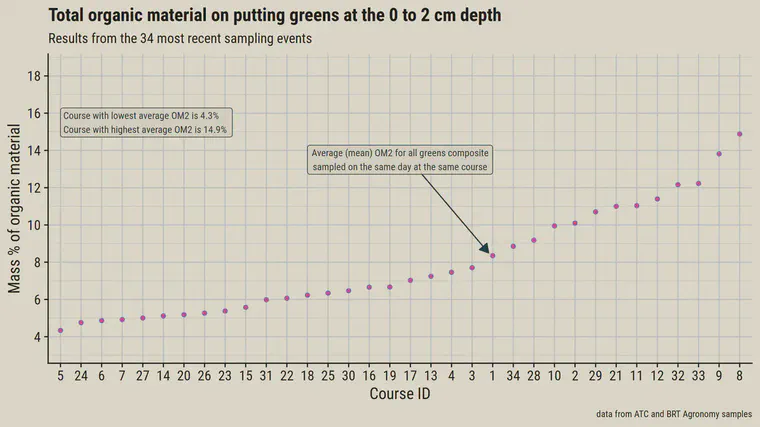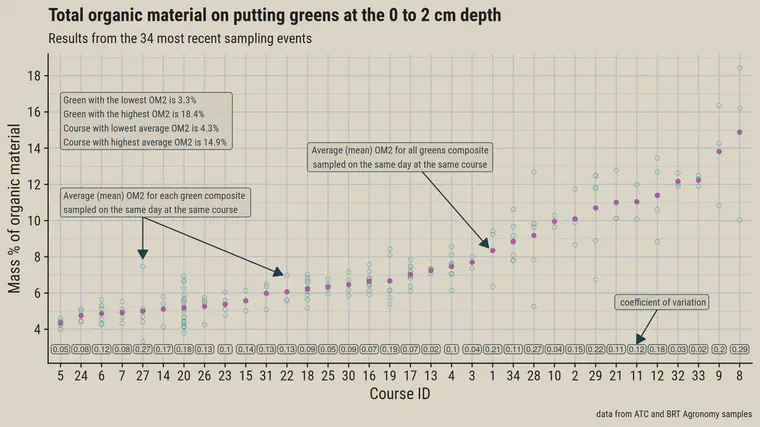Organic matter variability between greens at the same site
Daniel Hahn asked an interesting question about organic matter.
Talking about “variability between greens at the same site,” he wondered, “could you explain what your opinion is about the statement, if you think greens vary a lot in OM or if you see minor difference? I think that is a very interesting topic.”
So do I, so I took a look at it with recent OM246 samples tested at Brookside Labs by ATC and by BRT Agronomy. These are 34 recent sampling events1 from 2020 and 2021, excluding any research samples. These mean values show the average of all the greens tested on the course at that sampling date.

The chart above shows the background. From course to course, it’s reasonable to expect that the total organic material in the top 2 cm may vary from about 4 to 15%.
Then looking at where those averages came from, I can use some data to answer the question about variation in OM between greens on the same golf course. The answer, of course, as you see in the chart below, is that it depends on the site.

The coefficient of variation (standard deviation divided by the mean) is shown for each of these sampling events. The median coefficient of variation across these 34 sampling events is 0.12.
It’s not unheard of to see a difference of 50 g/kg (50 g/kg is 5%) in OM2 from the green with the lowest OM2 on a golf course to the green with the highest. The median range in OM2 for these 34 sampling events is 17 g/kg. This happens because of a difference in green age, difference in construction methods or rootzone material, difference in growing environments (shade and sun, especially), and there must be some variation because of traffic too.
For further reading about this, including within green variation, see:
How much does total organic matter vary within the same green?
Variation in rootzone organic matter (humus) from point to point on the same green
Total organic matter testing on putting greens: sample number and sample volume
I use the term sampling event to mean a unique golf course and sampling date pair. There are a few of these that are the same course, but measured at different dates. ↩︎